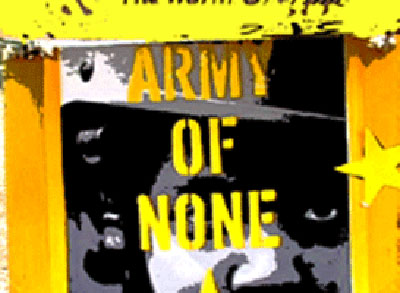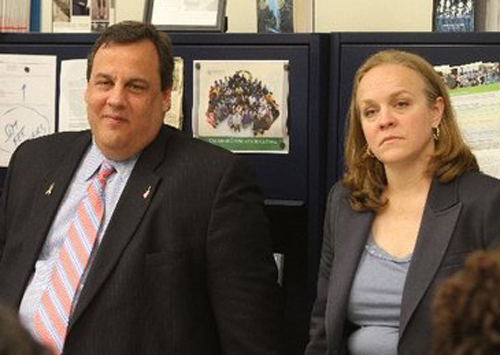Dr. Teresa Whitehurst -
 "Temptation is not random, nor is it one-size-fits-all. Instead, it will always attach itself to our unique talents and aspirations. One of temptation's cleverest tricks is to seduce that which is a strength. Our strength can become our downfall because we're tripped up through the misuse or misdirection of our talents and ambitions."
"Temptation is not random, nor is it one-size-fits-all. Instead, it will always attach itself to our unique talents and aspirations. One of temptation's cleverest tricks is to seduce that which is a strength. Our strength can become our downfall because we're tripped up through the misuse or misdirection of our talents and ambitions."
- Jesus on Parenting: 10 Essential Principles That Will Transform Your Family
My daughter works in the guidance office of her high school. She runs errands, takes calls, files paperwork, and does all she can to help guidance counselors as they advise and assist college-bound students. But demand is low this year: With recruiters sitting in the hallway, playing rock music at a cafeteria table at lunch, and striking up chummy conversations with kids every chance they get, and with every senior's first period devoted not to academics but to watching Channel One's recruiting TV, military prep is winning young hearts and minds away from college prep.
On parent-teacher night, I entered the guidance office and noticed large recruiting posters on the wall. There were no college-recruiting posters or ads of any sort. Inside the guidance counselors' offices, students can't help but see more military posters and stacks of glossy recruiting brochures, booklets, and magazines. If you didn't know better, you'd think you were at the Army Recruiting Office near the mall, not a public school guidance office that's supposedly dedicated to helping students make the most of their educational experience and continue on to college or trade school.
A guidance counselor may never say a word about joining the military. But then again, she really doesn't need to: the recruiting posters and materials do it for her. Students can't help but see them, and if they ever pick up a brochure while they're waiting, they're bound to feel the pull of exceedingly well-researched appeals to teen psychology.
How Military Recruiting Posters and Brochures Persuade Teens at School
Marketing whizzes at MTV, The Gap, and Abercrombie and Fitch know how to appeal to kids in need of confidence, direction, escape, and/or an identity, but the military is even better at it. And considering enlistment's distinct disadvantages over purchasing clothing and music (with the former you stand a good chance of getting killed or losing an eye, a limb, or your mental health), the marketing tricks in military materials must be far more sophisticated and on target. Here's just a sampling of the psychological and financial appeals used to persuade kids (all bold print and caps are as-printed on the brochures):
Large folded brochures for the Army are made of high-quality glossy card stock, featuring a macho-looking grainy yellow-and-black color theme:
Appeal #1:Immediate excitement; freedom from decision-making; unlimited career options; supportive, sky's-the-limit guidance from implicit father figures. Free money now, free money later, free college later, and free gifts now.
The cover teases: "FACT: CAREER ADVICE IS ALWAYS BETTER WHEN IT COMES WITH A FREE GIFT." The brochure folds out into five sections featuring pictures of white and black soldiers adjusting things in cockpits, wearing gas masks, working on laptops, and staring at a propeller of some sort. One section has three columns:
"US ARMY: SERVE AS A FULL-TIME SOLDIER STATIONED IN THE UNITED STATES OR OVERSEAS: Up to $70,000 for college after you serve, Up to $20,000 enlistment bonus, The chance to qualify for over 150 careers. …
"ARMY RESERVE: TRAIN NEAR HOME AND SERVE WHEN NEEDED: Up to $22,000 for college, while you serve, Up to $10,000 enlistment bonus, The chance to qualify for over 120 careers. … An extra paycheck every month. …
"ROTC: RESERVE OFFICER TRAINING CORPS: TRAIN TO BECOME AN OFFICER IN THE US ARMY OR ARMY RESERVE WHILE ATTENDING COLLEGE: Entry into the Army as an Officer, Up to $20,000 scholarship a year, Up to $4,000 annual stipend, Generous textbook allowance."
On the back cover, the bold print continues: "IN THE ARMY, YOU'LL GET GUARANTEED TRAINING AND IMMEDIATE RESPONSIBILITY. NOT TO MENTION A FREE GIFT JUST FOR FINDING OUT MORE." The student is told, "Great careers start with great training, and that's what the Army is all about."
(The Army is "all about" career training?) Then comes the catch: "Return the card below to learn more, and you'll get a free US Army T-shirt. See? Your training is paying off already." Two tear-off cards are attached: One sells hard, "SEND ME MORE INFORMATION AND A FREE US ARMY T-SHIRT," while the other cries, "PLEASE SEND THIS TO A FRIEND."
At the bottom of each card in ridiculously small print (I had to get a magnifying glass to read it), an "act now!" flavor is added: "Offer expires April…" "You must be between the ages of 16 and 34…" and "The information you voluntarily provide, including your Social Security number, will be used for recruiting purposes only. Your Social Security Number will be used to analyze individual response to this mailing." (emphasis added)
APPEAL #2: Magical, immediate rescue from poverty, crime-ridden neighborhood, racism/hostility/contempt from adults, crummy school, and unemployment. All obstacles vanish as soon as the student enlists, and riches start pouring in.
Another yellow/black Army brochure is more blunt, designed for kids whose families can't afford to send them to college. The cover shouts: "LEARN HOW TO OVERCOME OBSTACLES. LIKE COLLEGE TUITION." On the next page, these are the only words: "GET UP TO $68,000 FOR COLLEGE." On the page after that, these are the only words: 3 WAYS TO EARN.
On the following drop-down pages, hip photos of an ecstatic-looking white soldier leaning on a chain-link fence; somber, intelligent-looking Asian and African-American men dressed in medical clothing and standing in an operating room; and a vulnerable-looking white woman in fatigues who's sitting on the ground holding a camera.
APPEAL #3: Buy now, pay later message: Get immediate money without even working! Don't worry about war and possible maiming or death – that's far away in the distant future. Just enjoy your free $120 every month today.
The "sales close" is headlined: "SIGN UP NOW, SERVE LATER." The text explains that with the Delayed Entry Program, you can "have your plans for after graduation all lined up. Enlist in the Army now, and the career training you select will be reserved for up to a year. Or enlist in the Army Reserve now, and you can earn over $120 a month during your school year, even before you go away to Basic Training."
APPEAL #4: Buddy system to allay realistic fears of getting wounded or killed. Free gifts allow teens to imagine being soldiers without risk, with "personalized Dog Tags" and Army gym bags. Message: If you're scared of entering the military and combat, convince your friends to enlist too: for a short time you and your buddies can have sleepovers and hang out together. It'll be fun.
"JOIN WITH A FRIEND: Buddy Team Enlistment Option: Sign up with a friend, and if you both qualify, you'll go through Basic Training, Advanced Individual Training and your first Active Duty assignment together." Then the clincher: "GET MORE INFORMATION AND A FREE ARMY GYM BAG."
In case the gym bag isn't enough, another couple of cards were mailed to my daughter at the same time, pleading: "PLEASE SHARE THIS WITH A FRIEND. Learn more about the Army and get a free personalized Dog Tag. Just send in his form. … There is no cost or obligation."
APPEAL #5: Finding (or consenting to) one's destiny; freedom from decision-making.
A Navy brochure, smaller but more colorful and hip, appeals to kids' confusion, anxiety, and the pressing need to find meaning and direction: "Sometimes you go in search of your destiny. Sometimes, it finds YOU instead. Welcome to your future."
APPEAL #6: Psychological support and flattery to boost low self-esteem/confidence.
Inside the Navy brochure, students read what they wish their parents and teachers would say – but are often too busy, stressed, or cautious to tell them: "You have one life. How far can it take you? AS FAR AS YOU WANT TO GO. Navy Advanced programs. They're not for everyone. Frankly, we don't take everyone – only certain individuals with special qualifications. Pride. Intelligence. Integrity. And guts."
APPEAL #7: Promises of excitement, adventure, macho identity, superiority to friends; immediate rescue from boredom, lack of options, and meaningless, dead-end jobs.
"In Navy Advanced Programs, you'll do more in six short years than most do in a lifetime." There are photos of young men wearing things on their heads: goggles, masks, helmets, and headphones, above which are the words: "TWO-THIRDS OF THE WORLD IS UNDERWATER. SO MUCH FOR HAVING TO ACHIEVE YOUR POTENTIAL FROM A 6' BY 8' CUBICLE." Under the photos are the words: "Brace yourself: Each advanced program is far from ordinary. Far from what your friends are probably doing. And far more meaningfully."
APPEAL #8: Promises of intellectual challenge, not just physical, macho adventure; promises of equal opportunity for minorities and women.
On the next page there are photos of an Asian man working complex controls (the word TECHNICAL is superimposed, perhaps to make sure young teens understand that working controls is technical), a Hispanic woman spraying something on a metal object, and a black person of indefinite gender fiddling with large red circular items.
APPEAL #9: Reassurance that the military offers better education than college ever could; promises of being given the responsibility and power of life-and-death decisions/actions; "adrenaline-pumping" excitement; saving time (earn-degrees-while-making money); and cash now.
The exciting caption under those photos reads: "Getting a life and getting an education don't have to be mutually exclusive. You tend to learn more when you do it, rather than hear about it. You tend to learn more when the lives of co-workers depend on your skills. You tend to learn more when your teacher weighs 97,000 tons. There's a lot to be said for having a nuclear aircraft carrier as a teacher. Not the least of which is that in two years of hands-on, adrenaline-pumping training, you'll not only have the adventure of a lifetime, you'll be just credits away from an associate's degree. All while getting paid."
APPEAL #10: Impressing friends; self-esteem boost via superiority to "most people"; tacit reassurance that training won't require academic skills or classroom success; free international travel; James Bond intrigue and adventure; power/sex appeal through identification with powerful, sexy things (warships, nuclear reactors, and beautiful on-ship women) – and, last but not least, "saving the world."
More captions: "DO MORE THAN AMAZE YOUR FRIENDS. AMAZE THE WORLD. Navy Advanced Programs take you around the world. Using equipment most people could never dream of. From working on nuclear reactors to decoding encrypted foreign communications. Where do you see yourself? Check out the possibilities…"
Next are magazine-style sound bites: "Underwater surveillance. Search-and-rescue operations. Assembling and maintaining nuclear-capable ballistic missiles. In advanced electronics, adventure, intrigue and saving the world are all in a day's work."
Photos illustrate unstated promises: An African-American man is tinkering with wires, a Latino man is steering something, and a pretty, smiling blonde woman, her silky hair blowing in the wind, is holding onto a railing of some sort. The captions read: "Get behind the most powerful warships on earth. Maintain the Navy's most advanced propulsion systems and gas turbine engines. Analyze foreign communications data. Keep the world's strongest fleet moving. And thrive on the bottomless supply of adventure."
The following page shows a man wearing mountains of gear, an oxygen tank, white gloves, and a huge helmet, doing something with a large hose. The caption beckons, "If you're into adrenaline. Welcome to your DAY JOB." On another page, a white sailor is watching a black sailor who's touching some wiring while holding a 3-ring binder: The caption reads, "What makes the Navy the world's strongest? America's smartest."
On the postage-paid reply card, another pretty adolescent girl in a shapely red sweater sits on what appears to be a naval ship. The caption asks, "What's a typical day for a Navy Sailor? What do they do in their free time? What's it like to live on a ship? Get the answers in 12 minutes. Fill out this card for your FREE, 12-minute video." The card asks for all the usual identifying information, "for recruiting purposes only."
Parents and teachers who care about kids should study each of these appeals and inoculate naïve, trusting teens against their seductive powers. Don't let the military become your child's parent by filling his or her unmet needs – fill as many of those needs as you can, before it's too late. Talk with teens about the deception and psychological tricks in glossy recruiting. To paraphrase a well-known ad campaign, "Communication: The Anti-Recruiter."
Source: http://www.antiwar.com/whitehurst/?articleid=5885
Dr. Teresa Whitehurst is a clinical psychologist and writer who works in research on leadership for Harvard University. She writes and speaks extensively on parenting issues, conducts seminars and workshops, and has participated in various radio shows in the Boston and Nashville areas. She lives in Portsmouth, Virginia.
###
 “Counter-recruitment,” alternatively known as “truth-in-recruiting” or CR for brevity’s sake, involves providing young people and their parents with information about alternatives to military enlistment (college, vocational training, job opportunities, scholarships, etc.). At the same time, CR campaigns can provide a sense of the terrible realities of war by exposing students and parents to the words of soldiers, veterans, and foreign war victims. Since most military recruits enlist 1) because they see no other option, and/or 2) because they have a deluded and romantic view of war, the military, and US foreign policy, CR efforts can fill two important gaps in young people’s knowledge.
“Counter-recruitment,” alternatively known as “truth-in-recruiting” or CR for brevity’s sake, involves providing young people and their parents with information about alternatives to military enlistment (college, vocational training, job opportunities, scholarships, etc.). At the same time, CR campaigns can provide a sense of the terrible realities of war by exposing students and parents to the words of soldiers, veterans, and foreign war victims. Since most military recruits enlist 1) because they see no other option, and/or 2) because they have a deluded and romantic view of war, the military, and US foreign policy, CR efforts can fill two important gaps in young people’s knowledge.
 "Temptation is not random, nor is it one-size-fits-all. Instead, it will always attach itself to our unique talents and aspirations. One of temptation's cleverest tricks is to seduce that which is a strength. Our strength can become our downfall because we're tripped up through the misuse or misdirection of our talents and ambitions."
"Temptation is not random, nor is it one-size-fits-all. Instead, it will always attach itself to our unique talents and aspirations. One of temptation's cleverest tricks is to seduce that which is a strength. Our strength can become our downfall because we're tripped up through the misuse or misdirection of our talents and ambitions." 
 Rarely do conditions line up like this for NNOMY but a
Rarely do conditions line up like this for NNOMY but a  Doug Henwood, a radical economist and founder of
Doug Henwood, a radical economist and founder of  Public schools in the United States have increasingly come to resemble the military and prison systems with their hiring of military generals as school administrators and heavy investment in security apparatus—metal detectors, high-tech dog tag IDs, chainlink fences, and real-time Internet-based or hidden mobile surveillance cameras—plus, their school uniforms, security consultants, surprise searches, and the presence of police on campuses.1 But it would be a mistake to understand the preoccupation with security as merely a mass media-driven hysteria in the wake of Virginia Tech and other high-profile shootings, and myopic to ignore the history of public school militarization prior to September 11.
Public schools in the United States have increasingly come to resemble the military and prison systems with their hiring of military generals as school administrators and heavy investment in security apparatus—metal detectors, high-tech dog tag IDs, chainlink fences, and real-time Internet-based or hidden mobile surveillance cameras—plus, their school uniforms, security consultants, surprise searches, and the presence of police on campuses.1 But it would be a mistake to understand the preoccupation with security as merely a mass media-driven hysteria in the wake of Virginia Tech and other high-profile shootings, and myopic to ignore the history of public school militarization prior to September 11.